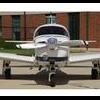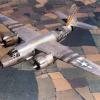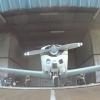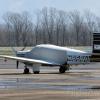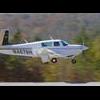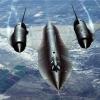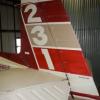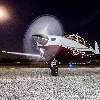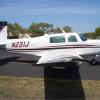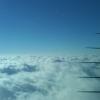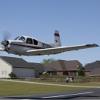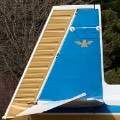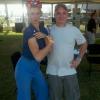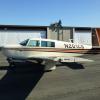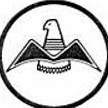Leaderboard
Popular Content
Showing content with the highest reputation on 10/29/2015 in all areas
-
Looks like an issue with the chemtrail dispenser, sometimes the nozzles get twisted.4 points
-
From Saturday 10/24/2015. Two short clips. Sorry, no music, no editing, amateur video, Using the Mooney as intended. Too go visit Dad more often and more quickly. Youngest son Will (just turned 10), enjoying accompanying me. He slept for almost an hour on the way back. Thanks for viewing, Lance3 points
-
Friday- Flew from Arkansas to Charleston. Had a 5:45 am CDT departure and climbed to my cruising altitude of 13,000 between layers. Got to try out my new Oxygen system I bought at Oshkosh this year. Landed at Gadsen Alabama for fuel before going through ATL Center airspace as I have had them vector me all over in the past. Had full service fueling done while I was standing there. Took 24.6 gallons but the line guy tried to charge me for 26.7 gallons. He chuckled that he must be dyslexic (he didn't even have the right numbers to support dyslexia). This is why I always witness the fueling process after I was overcharged in Youngstown Ohio last year (equated to a 13.5 GPH fuel burn in a C model!) Departed Gadsen and shortly after handoff to ATL Center...the re routing game started. Look at my Flightaware to see the path they took me on. Made it into Charleston without any issues and was surprised at the lack of traffic. I was cleared to land as #1. After completing my business, I flew to Morehead City, NC to spend the night with friends. Arrived MRH shortly after 5:00 pm EDT. Left MRH Saturday morning, refueled (self fueling) at GAD and arrived back home in time to pull my cowling and do an oil change. I have the best wife as she met me at the airport with dinner in hand that enabled me to tackle the oil change. Needless to say I was a little tired on Sunday.3 points
-
Oh dear, here we go 1) Weight penalty is not really a factor for my passenger load-1 child, wife's weight is significantly below FAA standard pax weight, and I'm slightly above. 2) Price premium-1 time expense that I saved up to fund so this didn't (majorly) factor in. 3) Losing the tabs was a bummer, but for me I mainly used the tabs as a mark to buy less fuel at a remote FBO that has high fuel costs. I can almost always fly with full fuel and my pax load (even with bladders) 4) I'd patched my tanks only to have an issue pop up again on another panel which didn't endear me to a sealant solution 5) I fly to a handful of grass strips. Could be an old wives tale but I've heard that this is hard on wet wings. Maybe this only applies to old seal jobs like I had. 6) 2 reseal stories scared me: 1) reseal only 2 years ago was having problems and 2) quality reseal followed up by painting at a shop that incorrectly stripped the wings which resulted in leaks 6 months later. Obviously the reseal wasn't the cause but I'm not sure I'd keep my sanity if this happened to me (planning to paint in the next year or so) Probably the biggest reason: 7) I couldn't find even 1 person that had bladders that wasn't happy with them. It seemed that the people most unhappy with bladders didn't have them (point that Jetdriven made many, many times). This seems to be the most "permanent" fix for a problem I've seen for the plane. Hope this doesn't start a war. I know people can pick apart each of my reasons and that's ok. These were my reasons -Kris2 points
-
2 points
-
That's a Kelvin-helmholtz wave cloud. Indicates a zone of wind shear. I think it's just an illusion that makes it look like two twisted clouds. I believe it's just one with the top layer moving faster than the bottom. Pretty cool cloud.2 points
-
2 points
-
Last three commercial flights, I noticed that virtually all the window shades were closed during daylight. No one seems interested in looking out the window and the daylight interferes with the tablet screens. The thrill of flight has certainly waned. The really sad thing was my window shade was pulled down tight too.2 points
-
Looks like there were some service bulletins to add it to older Mooneys like this: http://www.mooney.com/en/sb/M20-33.pdf2 points
-
A few months ago I posted that Mooney was going to make a big announcement. I know what the announcment is. ✈️ No. Not a jet. i don't know the full extent of the changes, just the major ones. Many have argued for different changes, myself included, but it is a start. David1 point
-
1 point
-
1 point
-
Well, I just got confirmation that I got a hangar at KGAI... So I will be based their again. Oscar1 point
-
1 point
-
Disclaimer, I have no real knowledge of any new M20 developments... I'm just opining as an engineer that has been through the M20 on his own. In the structural engineering world, there is a saying that "holes are heavy." In our case, adding another big hole that would cut through the structural steel tubing means a lot of modification has to be done to restore the lost strength and stiffness, not to mention the additional weight of the new parts involved with the door, wing walk, step, etc. All of which takes big bites out of useful load... In my case, I wouldn't put it on my plane if it were free due to the weight issues that would turn my J into a 3-place vs. the 4-place it is currently. But many other owners/buyers think differently than me.1 point
-
1 point
-
I have a quick question for all you experienced mooniacs. I was flying last week at 16,000 when I saw this out my co-pilot window. At first, I thought it was just undulating parallel contrails but if you notice the two "strands" wrap around one another. Didn't see any other contrails along that direction of flight. I wanted to follow them to see if I could find a Leprechaun, Jimmy Hoffa or a 737 doing rolls. Any thoughts? Seen it before ? Thanks, J1 point
-
1 point
-
I did move up to the 830 from an old GEM 602, so I get the dramatic jump from the mono to full color. I posted those pictures so people could see the differences between the 830 and 900 (including the changes they made to the format and colors). As for posting panel pictures, I think of them as full service messages. I think it benefits people to see what can be done and I have answered a number of questions over the pros and cons of what I did. I think Bob B, Oscar and others are doing the same thing. I think seeing what they did led people like yourself & Dev to make the investment. I am really interested in ongoing PIREPs on the FlightStream product. I'm holding out hope that the GDL-88 will be open sourced for interfacing with the Aspens. Once that happens, I'm on the FlighStream wagon. I think Dev had one installed and would be curious to see one work in person. Sent from my iPad using Tapatalk1 point
-
I have been flying commercially a lot lately and noticed the same thing. At one time wasn't it a requirement they were open for take-offs and landings? I could see people getting irritated when someone opened one to look out how dare they?! Sent from my iPad using Tapatalk1 point
-
1 point
-
1 point
-
1 point
-
The CHT adapter that goes on the bayonet comes with a piece of orange fire sleeve that most people assume goes over the wire connections. It is supposed to be slid over the whole probe assembly and secured with traps to keep airflow off the probe. the sleeve doesn't like to stay put, it ends up sliding up the probe and exposing the JPI adapter. It's better than no probe JPI should have certified the system as a primary replacement, in most cases that would allow the factory probe to go away and let you use 6 (or 4) probes that are the same for the JPI.1 point
-
Regarding the team aspect, it doesn't need to be aimed at sports when in the Corps. we had similar to your Patton quote work as a team starting from the time the bus crossed the gate, first day at Parris Island, we do need to work together so the group can act as one. I certainly didn't want this thread to go in this direction. I merely wanted a way to provide the youth the gift of flying...nothing else.1 point
-
1 point
-
My 84' M20J had 4 machine screws with nuts and washers holding the pilot side of that panel in place. There were also multiple #6 sheet metal screws attached thru the passenger side of the panel at the luggage door opening. My interior had been refinished and the exterior painted prior to me buying it. So, I can't say whether the machine screws were original for 1984. Mooney (2).pdf1 point
-
prop governor failure is rare. We are discussing soemthing that sonds and feels good but I cant find any evidence of this scenario happening. It would be worthwhile to feather check the engine once a year but there is no way oil remains in the governor for a year. The oil is pressurized to ~600 PSI and it is always moving forward. the transfer bearing and the prop leak enough oil to refresh it every couple minutes. I'd do it over an airport but I wouldnt initiate the emergency procedure at 5000, thats early...Just push the prop lever full forward, bump the starter if it wont unfeather, then give it the mixture. It will light off. Just let it warm up at 18" for a couple minutes before giving it hell.1 point
-
Well, to give you an update. My plane is still down... I got the overhauled motor back last week as well as the gear actuator switches. I gave everything to my IA yesterday and they are working on it. I took advantage of the downtime to upgrade my 430 to a 650 (considering that I am moving back to the US and that labor costs are going to go up...). Looks nice.... Unfortunately I don't think that the plane is going to be ready for a test flight before I leave to DC on the Monday. Thus, when I am back on November 14 I will need to do a flight test and then on the 16 in the early morning I will be off to the US. Route: MGGT - CZM - KEYW (about 700 miles). Then KEYW - Jacksonville. Weather permitting next day Jacksonville - KGAY or Leesburg Executive (depending if I get my old hangar back at KGAY). So I will keep you informed and make some videos of the trip.1 point
-
Having the Maint Manual and being able to do everything it describes are two different things . . . So says this Mechanical Engineer with an MS in Engineering. Lots of aviation-specific knowledge was assumed when these books were written, things that A&P students learn but were not covered in my classes. I learned to balance the combustion equation, figure fuel consumption in lbs per hour and determine the energy output of an engine given very few operational parameters; they learn the correct way to safety wire propellers, the difference between many different types of bolts and screws based on what is forged into the bolt heads, and how to open up a magneto without parts flying all over the room. fortunately I'm mechanically inclined enough that I rarely need to be shown these things more than once, although my safety wiring skills are abysmal. Is there a preferred direction of twist when doing this? Is it always the same? I would guess Yes and No, but have no idea when to twist in which direction. its about developing a relationship with your A&P, getting to know your plane AND how to work on it, and getting him comfortable with your knowledge and skill levels. The more he checks you doing and finds right, the more he will let you do. If you want to. Personally, I want to. The more I can do, the better shape I can keep my plane in all the time.1 point
-
What makes me or anyone savvy? Educating ones self on technologies, how aircraft are built, different brands, different engines. Asking questions, reading forums. Subscribing to aviation consumer, AOPA, or EAAs mags. Talks at Oshkosh or at an AOPA expo. Talking to my A&P. Hard won experience. Ask me how I know what a roller tappet is? Or a p lead? Or what bulb goes in my landing lights or annunciator panel? Or whether to go overhaul or reman or do the 310hp stc on the R? Or who to call to fix the panel rheostats when they don't work. When to preheat and how. What oil to use. There is WAY more to know than what is in those manuals, it's just a piece of a huge puzzle... A good piece, but just a piece. For me when the knowledge gets that specific, I'm glad I have a good A&P to execute the work. All I know is I'm way savvier than I was before ten years of aircraft ownership and conscientious self education and hard knocks. Sent from my iPhone using Tapatalk1 point
-
Luckily they abandoned that practice at some point. There are no pop rivets into the skin of my '86 K. The front pilot seat headliner is screwed into the rear seat headliner with 4 screws and nutplates/tinnermans that are screwed in from the top of the headliner which is real hard to re-install them if you are not removing the entire ceiling - such as doing a vent repair as I did.1 point
-
It knows how to stop at take off position because there are two micro switches which are actuated by a flat metal tab which moves with the flap linkage and when the takeoff position is reached it operates those 2 micro switches. If you lay under the airplane with the flaps in takeoff position and push in the takeoff position micro that is not already pushed in the flaps will move so that it tries to activate the switch. Basically you have two switches working against each other. One switch trying to send the actuator toward the other switch. Total of 4 switches 1 is the fully deployed limit, another is the fully retracted limit, then 2 switches for the take off position. On the panel, a three position switch, retracted, full flap, and take off position.1 point
-
That's how it came from the factory.1 point
-
Paul, you had me on board UNTIL you had to throw in the B.S. Lib mantra on sports. You were not a student athlete were you Paul. To not enjoy participating in sports...or aviation is fine with me, but throwing out a blanket statement that "sports are actually the biggest waste of time" is an ignorant comment at least and a hateful uninformed one at best. Competition, whether on the golf course, cross-country, Track, Tennis Court, Volleyball Court, Baseball/Softball Field, Math Competition, Show Choir or gasp Soccer, Football and Hockey develop youth in positive ways that a software-jock hating geek apparently just "don't get". It is NOT about making a living. It is about developing yourself physically and mentally. Improving from coaching and training. Learning how to be a part of something bigger than you. It is about the whole being better than the individual parts or as Patton once said: "Americans play to win all of the time...and you should have seen those trucks on the road to Tunisia. Those drivers were magnificent. All day and all night they rolled over those son-of-a-bitching roads, never stopping, never faltering from their course. They did it, and in one hell of a way they did it. They were part of a team. Without a team effort, without them, the fight would have been lost. All of the links in the chain pulled together and the chain became unbreakable." %^$& your 21st century. This progressive party B.S. don't hunt. There, a contrary opinion to chew on and hate. Everybody knows hockey is not a real sport anyway.1 point
-
I have feathered my prop on the ground. I didn't know that (keeping the RPM's up a bit) for feathering was important until I had an incident later. A group of us local pilots had spent about 3 days looking for an old friend that went down while flying wolf patrol for the DNR. Later we found he had a heart attack, in his 80's, and died doing what he loved. The old Cessna 182 flew until it ran out of gas, in circles, and gently went into the trees. Not even sure if the plane got damaged much. Anyway, during lunch on one of those search days, I inquired about the "full feathering prop", as at the time I was a fairly new Rocket owner. A couple of commercial pilots and an IA I work with told me I could exercise it on the ground during my run up, but drop the RPM's down to about 1200 or so. I did, it worked. A few days later I am doing a flight to a small, quiet airport about 30 minutes east of my home base, and center is keeping me up at 7000' due to traffic with an IFR clearance coming out of the same airport. I pulled power, progressively, expecting a slam dunk once he got off. By the time I got my descent clearance, I was high enough I thought why not try an emergency landing procedure. I pulled power to idle and pointed the nose down at best glide speed. Well, with the 3 blade prop, by the time I got down to 1,000' above the runway, it was apparent I wasn't going to make it. But hey, I was just told how great feathering the prop is, so.......I feathered it. Little did I realize a fully feathered prop at idle RPM is WAY TOO much drag on the engine, and about the time I realized it was going to kill it and put my hand on the prop knob, she quit. After the "oh sh.t" moment (or two or three), I decided the most ingrained advice my flight instructor gave me would keep me a alive; fly the airplane. I looked down and I was about 500' above the airport, with a stopped fuel injected engine (never been easy to start hot) and a prop in full feather, If I screw around trying to get the prop out of feather and the engine running, I may full well crash this thing from inattention to the important thing, fly the airplane. I would clearly make the run out area, and the insurance company can replace the plane. My descent rate dropped from 500 FPM to 300 FPM. It was surreal, only hearing the wind noise (and no engine). As I further assessed the situation, it began to appear I would actually make the runway..........and I did, by about 1,000'. I sat on the runway digesting what I had just did for about a minute or two. Then I realized I was picking up a customer to bring back to the dealership to close on an new log truck and drive the it home. I pushed the prop forward, cranked the engine, it came out of feather, started, and I taxied to the terminal (luckily where I was stopped on the runway was not visible from the building. Needless to say, the customer heard none of the details about my approach and landing, my biggest hope being there was no lingering smell from my shorts. It was a few days before I discussed this with anyone. I will never do that again, but have full confidence on the glide ratio on a Rocket. It's pretty impressive. If I DO lose the engine, I will not hesitate to feather. Tom1 point
-
Go to the Apple store and download the free book "Learning to Fly" by Claude Grahame-White and Harry Harper. While extolling the virtues of the advanced airplanes and the many improvements made since the early days of flight, he describes blipping the ignition to reduce speed, shutting off the ignition and gliding to landing, and taking checkride with the official observing from the ground. His book is copyrighted in 1916. It's an interesting, quick read.1 point
-
there is not much of a throttle on the rotary engine. As I recall, there is some level of fuel control, but the primary way of adjusting power is by blipping the ignition. You can see some videos on YouTube. Perhaps our new member, Mr Hammond can chime in from his Old Rhinebeck experience. These are really cool planes. Love that short takeoff roll.1 point
-
The prop won't feather above the RPM threshold which is usually around 700RPM. So when you cycle you just go through pitch change and circulate the oil out of the governor (and make sure it is working). Feathering the prop puts the blades flat so that their is no drag from windmilling and minimal drag from the prop itself. Useful in a twin, not so much in a single.1 point
-
1 point
-
I believe the switch in question is a sealed membrane type and contact cleaner won't reach the metallic contacts. If you don't want to repair the unit you could install a remote comm flip-flop switch. The GNS 530 supports that feature. (On J5002 pin 15)1 point
-
Hey! I resemble those comments! Don't make me get Peter Garmin after you! Sent from my iPad using Tapatalk1 point
-
1 point
-
I've even taken coworkers to ride who were afraid to fly. Waited for the right conditions. Sat in the plane inside the hangar, with the door closed. As we were climbing out, I asked how she was and offered to be back on the ground in three minutes. With an ear to ear grin, she said, "No, I'm fine. This is wonderful!" Then we had a nice scenic ride. She did not want to hold the controls, but did so briefly for a photo. It may not have changed her life, but it sure cured her fear of flying.1 point
-
Not an Air but I fly with a full-size iPad on a yoke mount and it works fine for me. Here's a photo. It's a capture from this video...1 point
-
OK, how about these: to, too, two there, their, they're chose, choose ensure, insure hanger, hangar As for me, I don't really care that much. As long as I get the gist of what they are saying, I don't care. The idea is to communicate effectively and a little spelling error usually doesn't have much effect (or is it affect?).1 point
-
Pretty simple really, different construction techniques. Tire Ply ratings are simply measures of strength, not how many actual plies the tires contain. Different materials manufactured different ways yield different strength. Same way you can construct a contractors ladder from fiberglass or metal and have the same strength but wildly different weights.1 point
-
1 point
-
Reading many stories like this is why the Johnson bar was on my requirements list1 point
-
M20doc I was thinking the same thing. Every one says if you bounce the landing you should do the go around. I guess the only difference would be intent. At least when one does a T and G your mind set will be on procedure1 point

